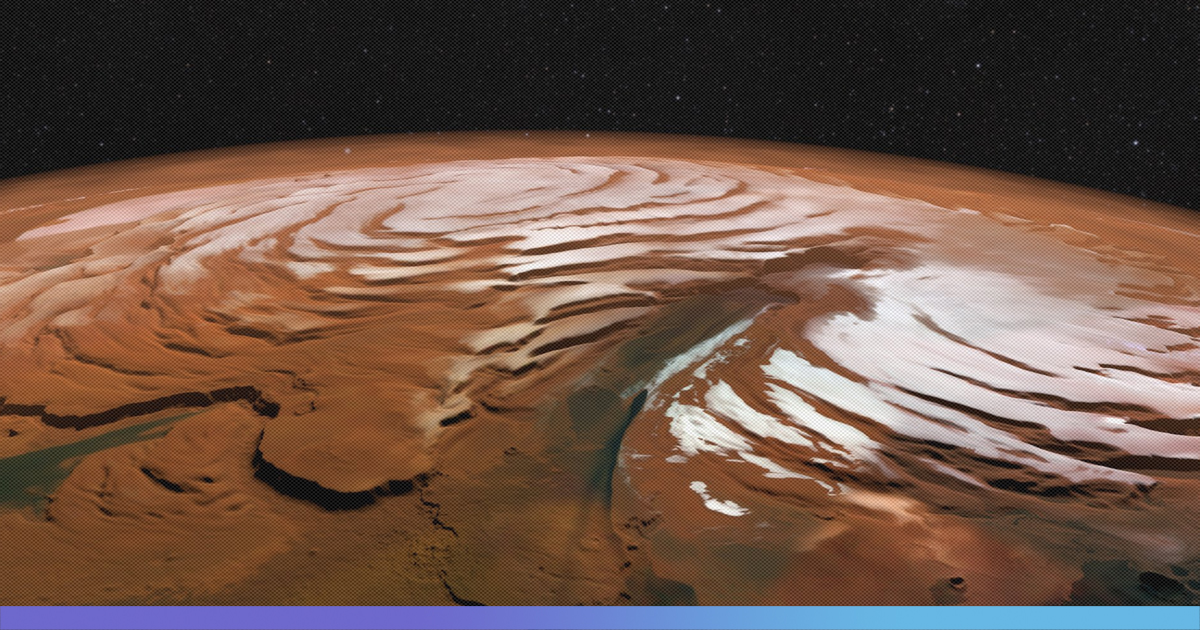In a quest to find traces of life on the red planet and to expand the space exploration program, scientists have now found a large deposit of water-ice buried within Mars’s surface. The scientists believe that frozen water is proof of a hidden polar ice cap.
The study was conducted from the researchers at the University of Texas at Austin and the University of Arizona based on data received from the Shallow Radar (SHRAD) on Nasa’s Mars Reconnaissance Orbiter.
The Orbiter has been circling Mars since 2006 and has crossed 60,000 trips around Mars. Due to the spacecraft’s ability to see 2.5 kilometre under the planet surface, the scientists have found the ice layered into deposits of sand.
Upon the discovery, Stefano Nerozzi, the lead author of the study, and a graduate research assistant at the University of Texas Institute for Geophysics (UTIG) and doctoral student at the Jackson School of Geosciences, in a statement said, “We didn’t expect to find this much water here”.
The discovered polar ice is considered to be the third largest water reservoir on the planet after the two polar ice caps. The authors of the study believe that the multiple layers were formed when ice accumulated at the poles during past ice-ages on the planet. One possible hypothesis that was proffered by the authors was that every time the planet tilted towards the Sun, the remnants of the ice caps were shrouded by sand, that protected the ice from melting and dissipating into the atmosphere.
As of now, researchers believed that the ancient ice caps of the planet were lost, but the study has revealed that large ice sheets survived by remaining under the planet’s surface, forming alternate bands of ice and sand, which resembles like layers of a cake.
Highlighting the amount of water found, Jack Holt, the Co-author and a professor at the Lunar & Planetary Laboratory of the University of Arizona said, “surprisingly, the total volume of water locked up in these buried polar deposits is roughly the same as all the water ice known to exist in glaciers and buried ice layers at lower latitudes on Mars, and they are approximately the same age”.
It is predicted by the researchers that the layered mix of ice and sand is so huge that if melted down could cover the planet with water about 5 feet deep.
The discovery is likely to provide new insights into the history of the planet. With the discovery, scientists are now keen to understand the weather of the red planet. Comprehending the weather condition on the planet would be necessary for human exploration. The new study would help scientists to trace any form of life on the planet.
Also Read: India Launches “Spy Satellite” Capable Of Keeping A Lookout From Space In Adverse Weather Conditions











